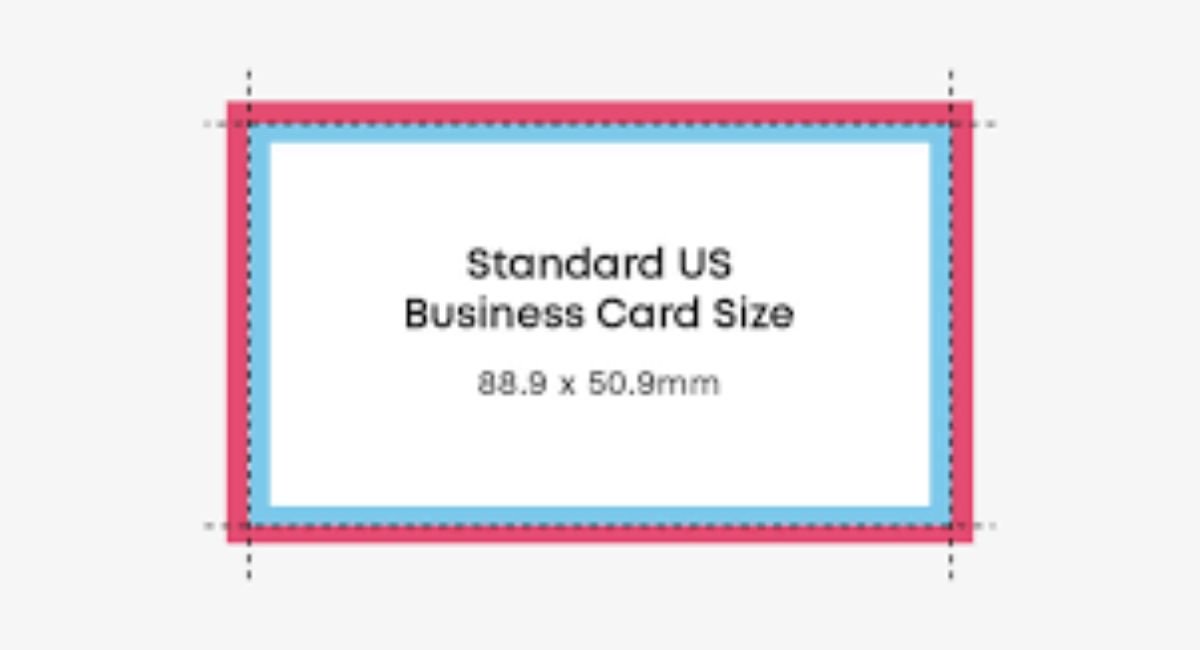Business cards have long been a staple of professional networking. While technology offers numerous ways to connect, a well-designed business card still leaves a lasting impression. It’s a physical token of your brand, your message, and your professional identity. One small piece of cardstock can convey so much—if done correctly. Understanding the perfect business card size is crucial to ensuring your design works well, is easy to handle, and carries your information effectively.
Why Understanding Business Card Size Matters
At first glance, a business card might seem like a straightforward tool, but its size can significantly influence its functionality and design appeal. Whether you’re slipping it into a wallet, a cardholder, or handing it over in a meeting, the size affects portability and readability. A card that’s too large might be impractical, while one that’s too small can get lost easily.
Selecting the right business card size is more than just a choice of convenience. It reflects your brand’s professionalism and attention to detail. Besides, an unusual size or poor layout might give off the wrong impression, even unintentionally.
Standard Business Card Size: What You Need to Know
When people think of business card size, they often imagine the classic rectangular shape. In most countries, there is a standard dimension that professionals follow to ensure compatibility with cardholders, wallets, and filing systems. In the U.S. and Canada, for example, the standard business card size is 3.5 inches by 2 inches (88.9 mm by 50.8 mm).
Why does this size work so well? First, it’s compact enough to fit into wallets and cardholders without any hassle. Second, it provides enough space for essential details like your name, company, and contact information without feeling cramped.
International Business Card Sizes
While the 3.5″ x 2″ dimension is common in North America, it’s important to note that business card sizes can vary from region to region. Here’s a look at some of the standard sizes used across the globe:
- United Kingdom and Europe: 85 mm by 55 mm
- Japan: 91 mm by 55 mm
- Australia: 90 mm by 55 mm
Despite these regional differences, business cards around the world remain close in size, ensuring consistency and ease of use. For international professionals, it’s wise to tailor the size to the market you’re targeting, as it adds a level of cultural awareness and professionalism.
How to Choose the Right Business Card Size for Your Brand
Choosing the right business card size depends on your brand’s identity, industry norms, and personal preferences. If you’re in a creative field, like design or photography, you might want to experiment with non-traditional sizes to make a bold statement. However, always keep in mind the trade-off between creativity and practicality.
For traditional businesses such as finance, law, or corporate industries, sticking to the standard size is often best. These industries value consistency, professionalism, and formal communication, which align well with a standard card design.
The Importance of Business Card Layout
A business card’s layout is just as crucial as its size. Regardless of whether you opt for a standard or custom size, the layout should be clear and well-organized. Here’s a breakdown of the most essential elements that should feature on a well-designed business card:
- Name: Your full name is essential. First and last names are standard, though including middle initials is optional.
- Job Title: Clearly state your role in the organization or company.
- Company Name: Highlight your brand or company name in a prominent position.
- Contact Information: Ensure that your phone number, email address, and company website are easy to locate.
- Logo: The company’s logo is crucial for brand recognition. Position it where it can stand out but doesn’t overpower the text.
- Social Media Handles: Only include relevant social media if it aligns with your brand (e.g., LinkedIn for professionals).
Business Card Size in the Digital Era
In today’s digital world, one might think physical business cards are becoming obsolete, but they still hold significant value in face-to-face meetings and conferences. In fact, they’ve become a unique way to stand out amid the digital noise.
Additionally, modern business card designs often include QR codes or NFC (Near-Field Communication) technology, allowing recipients to scan the card for direct access to your digital profile, website, or portfolio. However, including too much digital information can clutter the card, so it’s important to maintain balance.
Creative Uses for Non-Standard Business Card Sizes
Though the traditional business card size is the most widely accepted, that doesn’t mean you’re confined to it. If you work in a creative industry, for example, a unique business card size can be a great way to showcase your artistic sensibilities. Here are some alternative sizes and shapes you might consider:
- Square Business Cards: These are becoming increasingly popular for creatives looking to make a memorable first impression. Typically, square cards measure 2.5 inches by 2.5 inches, providing a compact yet unconventional alternative.
- Mini Business Cards: Slim and modern, mini cards typically measure 3 inches by 1 inch. Their smaller size makes them convenient to carry, and their unique shape can help your card stand out.
- Folded Business Cards: A folded card doubles the surface area of a standard card. It gives you more room to provide information, perhaps even including a small portfolio or list of services.
Whatever alternative size you choose, remember that function and design should work together. While it’s great to have a unique card, if it doesn’t fit in a cardholder or wallet, it may end up being discarded.
How to Ensure Your Business Card Size Fits Printing Guidelines
When designing your card, it’s important to be aware of printing guidelines to avoid any issues with trimming, resolution, or color accuracy. Most printers will ask for a “bleed area,” an extra margin outside your card’s final dimensions to ensure that no unprinted edges appear when the card is trimmed. Typically, the bleed area extends an extra 0.125 inches around all edges of the card.
For example, if you’re designing a card that’s 3.5 inches by 2 inches, you should create your design with a total size of 3.625 inches by 2.125 inches. Additionally, keep all important text and design elements within a “safe zone” of about 0.125 inches inside the final card dimensions, ensuring that nothing important is accidentally trimmed off.
Business Card Size: A Practical Consideration for Networking Events
The size of your business card also influences how it’s received at networking events. At these gatherings, attendees often collect multiple cards, so having a card that is easy to carry and store is crucial. A card that doesn’t fit into standard cardholders may get damaged or misplaced.
Moreover, the tactile nature of a business card—how it feels in hand—can influence the perception of your brand. A card that feels substantial and well-designed conveys professionalism and care, leaving the recipient with a positive impression of you and your brand.
Common Mistakes to Avoid When Deciding on Business Card Size
There are several common mistakes professionals make when designing and selecting the size for their business cards. These errors can detract from the card’s impact and usability. Here are some to watch out for:
- Oversized Cards: Cards larger than the standard size might seem impressive at first, but they’re inconvenient to store and often get discarded.
- Unreadable Font Size: While it’s tempting to fit as much information as possible on a small card, reducing the font size can make it hard to read. Always ensure the text is clear and legible.
- Overcomplicated Designs: Flashy designs might seem attractive but can confuse the reader. Simplicity often leaves the most lasting impression.
Sustainability and Business Card Size: Going Green
Sustainability is becoming an increasingly important consideration for businesses. Eco-friendly business card options include using recycled paper or reducing the card size to minimize material usage. Opting for sustainable materials doesn’t have to sacrifice quality; many companies now offer high-quality, eco-friendly business cards that maintain a professional look and feel.
FAQs
What is the standard business card size in the U.S.?
The standard business card size in the U.S. is 3.5 inches by 2 inches.
Are business card sizes different in other countries?
Yes, countries like the U.K. and Japan have slightly different standard sizes. The U.K.’s standard size is 85 mm by 55 mm, and Japan’s is 91 mm by 55 mm.
What is the ideal resolution for business card printing?
For high-quality printing, business cards should be designed at 300 DPI (dots per inch) to ensure clarity and detail.
Can I use non-standard sizes for my business card?
Yes, creative industries often use non-standard sizes like square or mini cards. However, ensure that the card is practical for carrying and storing.
Should I include a QR code on my business card?
A QR code can be useful for providing quick access to your website or portfolio. Just make sure it doesn’t clutter your design.
What is a bleed area in business card printing?
A bleed area is an extra margin (usually 0.125 inches) added to the card design to ensure that no unprinted edges appear when the card is trimmed.
Conclusion
Selecting the perfect business card size is more than just a logistical choice—it’s a statement about your brand, professionalism, and attention to detail. While standard sizes are often the most practical, there’s room for creativity if your industry calls for it. Whether you opt for the classic dimensions or experiment with something unique, always prioritize readability, design simplicity, and quality materials. When done right, a business card can be a powerful tool in building lasting connections.




